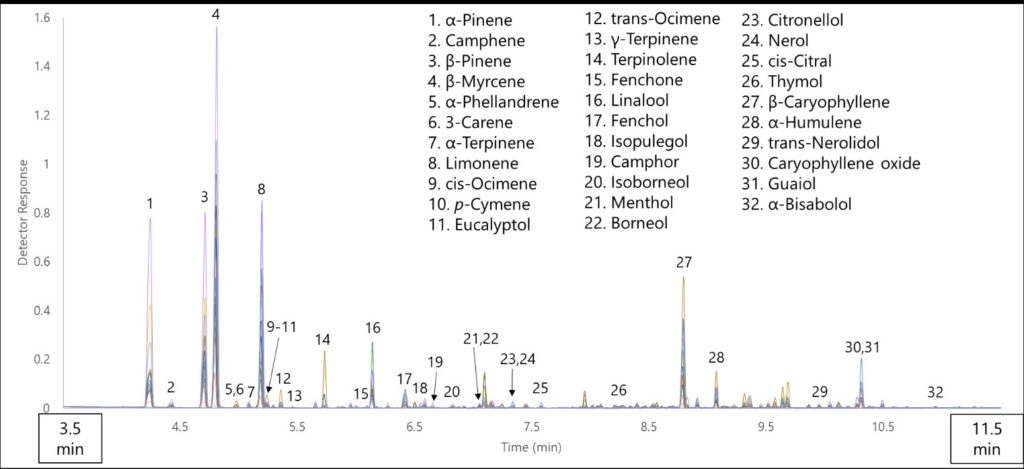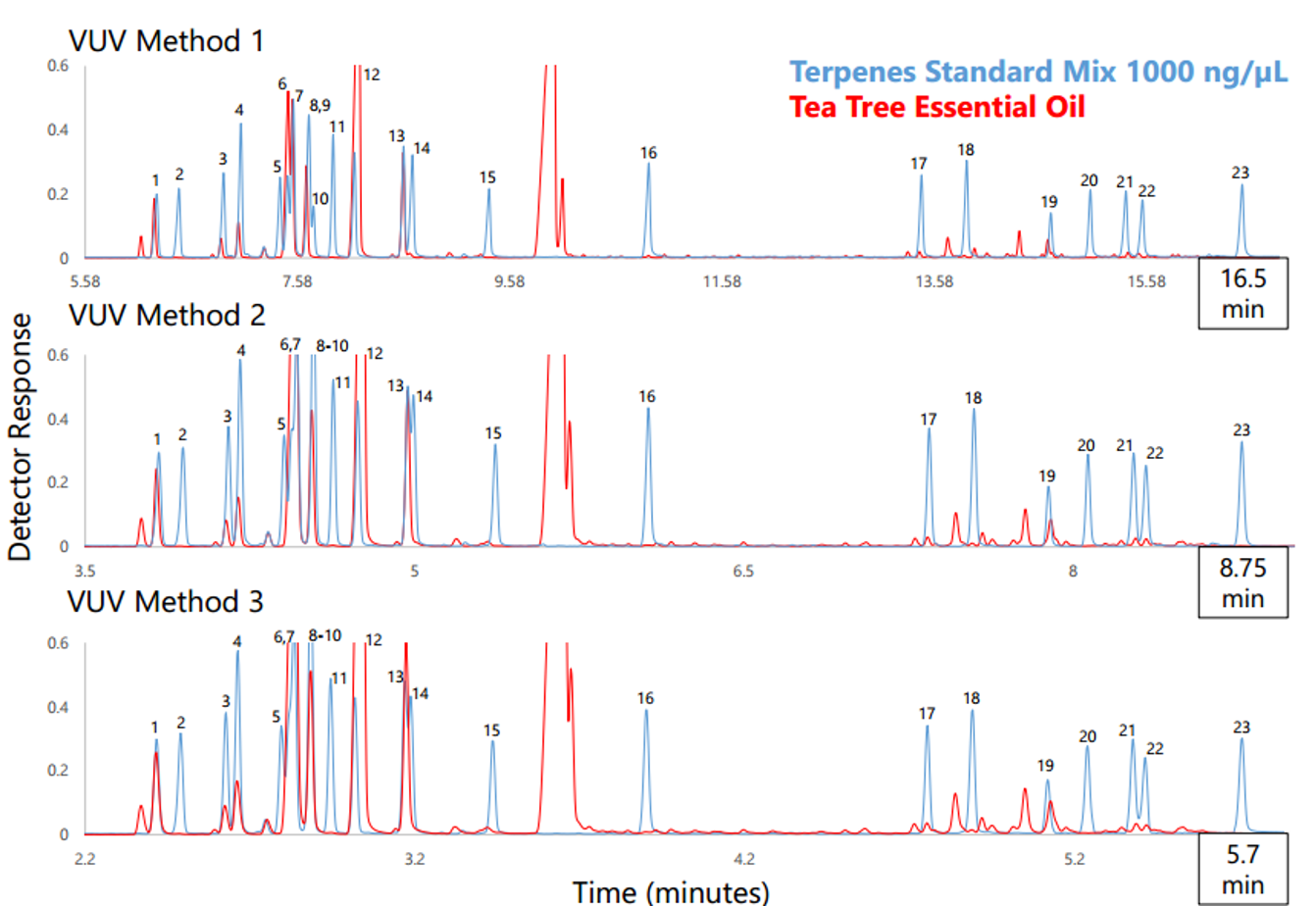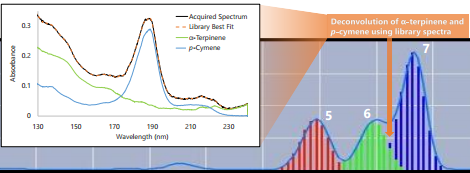Published Alex Hodgson on May 24, 2018
Cannabis Terpene Analysis by GC-VUV
Now that we got you laid back sippin’ on gin and juice, let’s discuss a topic that, to be blunt, is bringing in a lot of green these days but is still a bit of a sticky subject for some. (I apologize for none of that previous sentence.) All kidding aside, the legal cannabis industry is growing (last one, I promise) at a rapid pace, with annual revenues expected to triple over the next 10 years. In Part 5 of Better Living Through (Flavor) Chemistry, we’ll dive into the role terpenes play in the cannabis market.
So why are terpenes so important to cannabis? Sure, the total terpene profile contributes heavily to the odor and flavor of a cannabis strain, but certain terpenes also have powerful pharmacodynamic activity including anti-inflammatory, anxiolytic, antimicrobial, and anesthetic effects. These effects are potentially amplified in the presence of certain cannabinoids in a synergistic relationship referred to as the “entourage effect” 1. But which terpenes are going to have these effects, and will they be in high enough concentrations to even matter?
Again, we can utilize the power of unique absorbance spectra to deliberately compress the chromatography using GC-VUV, yielding an 11-minute elution time for 32 target terpenes. Figure 1 shows an overlay of steam-distilled terpenes extracts from 17 cannabis samples. As expected the terpenes with the highest response are the ones with known pharmacodynamic activity: α- and β-pinene, β-myrcene, limonene, and β-caryophyllene. However, that’s not the whole story; remember that analytes can have widely different response factors when it comes to VUV absorbance! Looking at Table 1, linalool and caryophyllene oxide are also in pharmacologically relevant concentrations (≥0.05% of the total cannabis extract) across most samples. Indeed, only sample 1 has no terpenes in significant concentrations. Table 2 shows other terpenes that are above pharmacologically relevant levels, though their pharmacodynamic effects (if any) have not been as thoroughly studied. Many of the other terpenes of interest were detected in the samples, though not across all samples and in varying amounts; these likely contribute to the unique flavor profile of each cannabis strain.
This post sadly marks the (hopefully temporary) end of this series. If you have any interesting topics you want me to discuss, post a comment below! Want to tell me to stick to my day job and stop telling jokes? Let me know that too!
 Figure 1. Overlay of steam-distilled terpenes extracts from 17 cannabis samples. The major peaks are also compounds that are pharmacologically active. The wide variety of terpenes found in these samples also contribute to a complex and unique flavor profile.
Figure 1. Overlay of steam-distilled terpenes extracts from 17 cannabis samples. The major peaks are also compounds that are pharmacologically active. The wide variety of terpenes found in these samples also contribute to a complex and unique flavor profile.
 Table 1. Terpenes of interest with known beneficial pharmacodynamic effects. Values in red indicate levels that exceed the threshold to be considered pharmacologically relevant, which is around 0.05% of the total cannabis extract. Typically, the total terpenes content is about 1% of the cannabis extract.
Table 1. Terpenes of interest with known beneficial pharmacodynamic effects. Values in red indicate levels that exceed the threshold to be considered pharmacologically relevant, which is around 0.05% of the total cannabis extract. Typically, the total terpenes content is about 1% of the cannabis extract.
 Table 2. Terpenes that also exceed the pharmacologically relevant threshold but whose pharmacodynamic effects are either unknown or require further research.
Table 2. Terpenes that also exceed the pharmacologically relevant threshold but whose pharmacodynamic effects are either unknown or require further research.










Leave a Reply